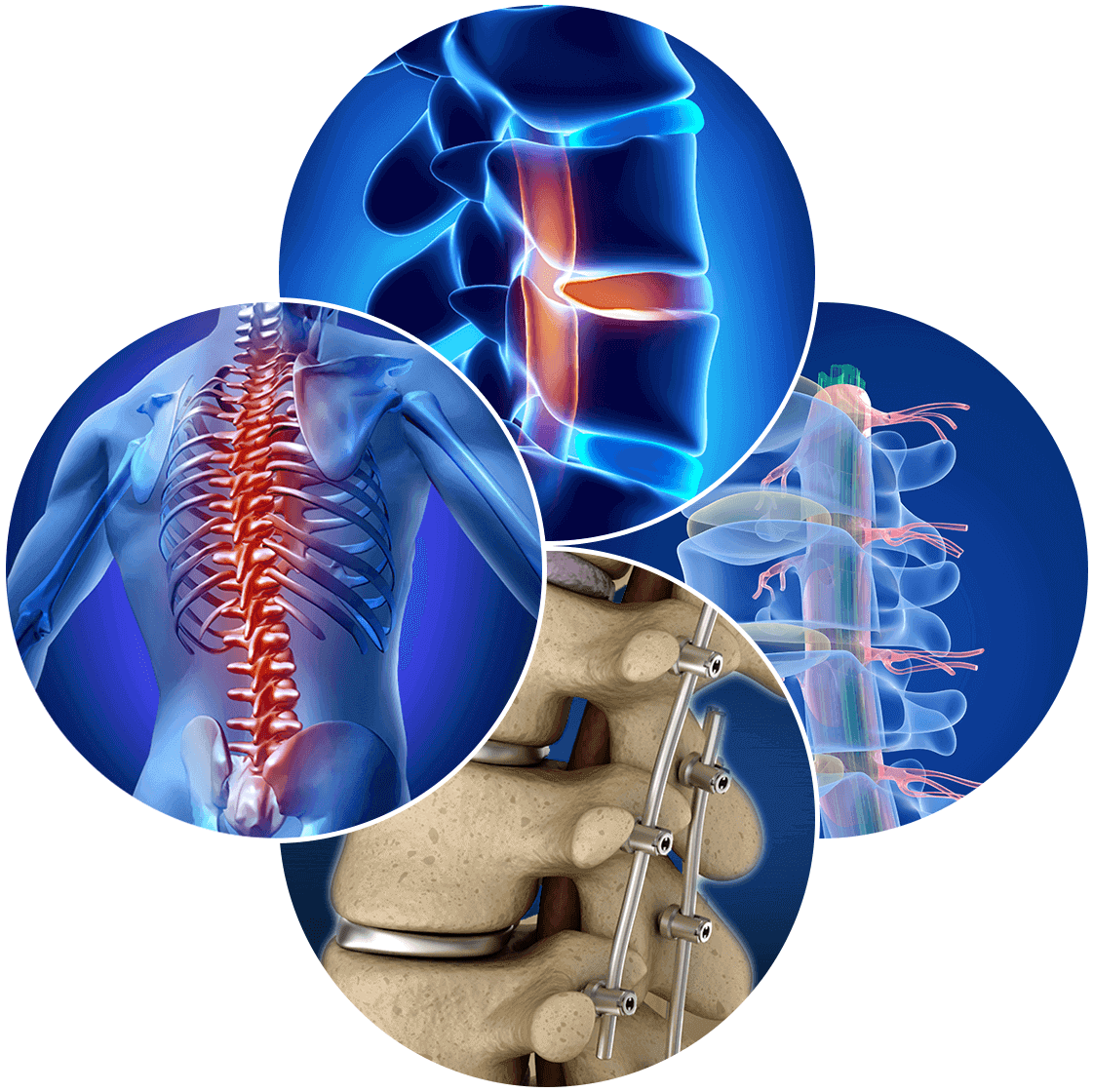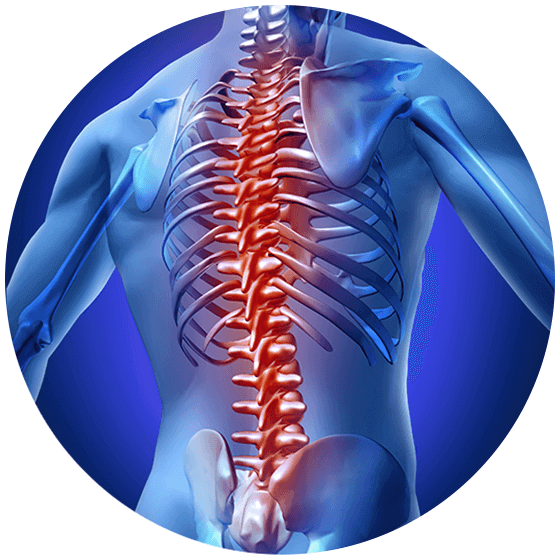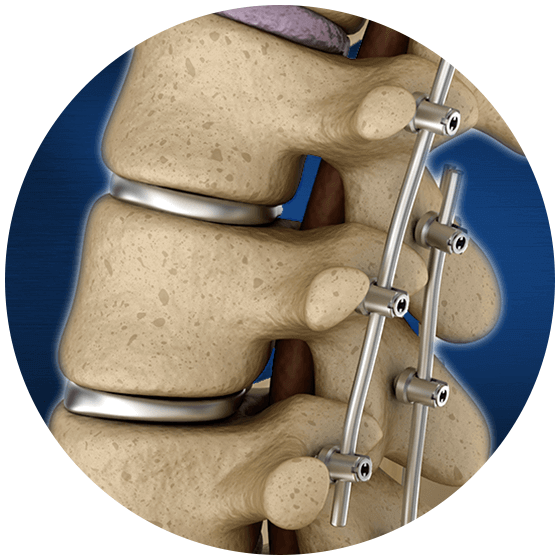Artificial Disc Replacement

Artificial Disc Replacement: Overview, Advantages, & Eligibility
Our intervertebral discs are crucial to the performance of our spine. However, when damaged, these spinal discs can result in debilitating pain and adverse side effects. For damaged cervical or lumbar discs, an artificial disc replacement aims to relieve spinal pain by removing the injured disc. Your surgeon will then insert a prosthetic implant that mimics the purpose of the original disc. This replacement model functions to maintain the height between our vertebrae, provides a shock absorbing cushion, and allows for the fluid movement of our spine.
Biomedical engineers have designed many different versions of the artificial disc. However, the most commonly used model is made of a plastic-like material called a biopolymer. This particular material mimics the rubbery texture of your body’s intervertebral discs. The biopolymer is sandwiched between two metal plates that allow for stable attachment to adjacent vertebrae.
During a minimally invasive Artificial Disc Replacement, your surgeon will make a small incision, typically on the front (or anterior) side of the body. An anterior approach allows for a clearer visual of, and complete access to, our intervertebral discs. Under normal circumstances, our bones, muscles, and critical nerves including the spinal cord shield our discs from view on the posterior side of the body. Through this anterior approach, your surgeon can gently push delicate organs and tissues to the side. Your physician can then remove the damaged disc using small, specialized tools and advanced surgical techniques. To maintain vertebral height, your surgeon will implant the disc replacement and attach the artificial disc to the adjacent vertebrae. The surgery is concluded with returning organs and tissues to their rightful positions and closing the incision.
The advancements in more realistic surgical materials and better surgical techniques have led to the following benefits for patients:
A less restrictive option when compared to traditional fusion procedures that limit mobility
The anterior approach avoids damage to muscles, bones, ligaments, and nerves in the back
Smaller incisions result in less pain, blood loss, scarring, and shorter recovery times
Minimally invasive techniques allow many patients to be up and walking after surgery
Many patients experience full or mostly restored mobility in their vertebrae following surgery
Advantages of an Artificial Disc Replacement
Artificial disc replacements have provided many patients with the opportunity to return to the activities that they once enjoyed before the onset of debilitating pain. Our team at the Advanced Spine Center has years of training and experience in providing patients with the finest standard of personalized care. Working directly with you, our award-winning team of Top Doctors will fully diagnose your condition and provide you with viable options for relief. If an artificial disc replacement is the right solution for you, then you can trust the expertise of our fellowship-trained surgeons to restore your quality of life.
Eligibility Requirements for an Artificial Disc Replacement
Complete replacement of a spinal disc without the need for fusion is a condition-specific procedure that can help individuals who suffer from particular types of pinched nerve pain. If you meet this criterion and have not found relief from more conservative treatments like physical therapy or pain management, then an artificial disc replacement may be a valuable, state-of-the-art option to relieve your pain. Most candidates for an artificial disc replacement will be between the ages of 18 and 60; have only one disc that requires replacement; and exhibit signs of radiculopathy, or pain that shoots from the site of nerve impingement and into the limbs.
However, an artificial disc replacement is a specialized surgical option that doctors only recommend for specific conditions. Consequently, there are certain medical circumstances that may disqualify you from receiving this procedure. If you are pregnant or have more than one compromised vertebral disc, a spinal infection (or osteomyelitis), spinal stenosis, osteoporosis, spondylolisthesis, or another severe form of spinal instability, then an artificial disc replacement may not be recommended for you. To learn more, consult with a physician regarding your options for safe and effective pain relief.


